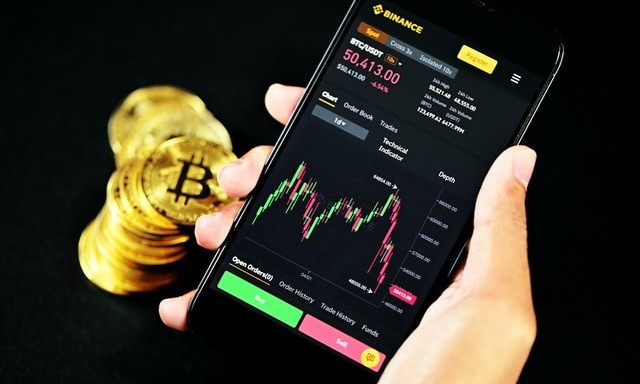Types of cryptocurrency
CEOs from the world’s top banks, including Morgan Stanley, Goldman Sachs, Bank of America and BNY Mellon, among others, joined Dimon Wednesday to answer lawmakers’ questions about how effectively the banking industry is serving Americans.< https://nicksesen.com/ /p>
Dimon acknowledged the practical applications of blockchain technology in facilitating efficient transactions and data transfer. He is optimistic about smart contract-enabled blockchains, such as Ethereum, which facilitate the execution of financial transactions without the need for intermediaries.
Bitcoin and its pseudonymous creator (or creators) Satoshi Nakamoto released the technology to the world after minting the first digital coin. A blockchain, the underlying tech on which Bitcoin’s network runs, is a distributed, online ledger that records transactions. It uses cryptography and cannot easily be tampered with.
Dimon’s comments come as his institution continues to push ahead into the blockchain space. The banking giant launched its corporate stablecoin, JPM Coin, in 2017, which today is still available to select institutional clients. The bank also launched its blockchain platform, Onyx, in 2020, at the time hailing it as the first-ever bank-led project of its kind.
Sandy Weill left American Express in 1985, and Dimon followed him. The two then took over Commercial Credit, a consumer finance company, from Control Data. At age 30, Dimon was appointed chief financial officer, helping turn around the company. In 1998, through a series of mergers and acquisitions, Dimon and Weill formed a large financial services conglomerate: Citigroup. But Dimon left Citigroup in November 1998, after Weill asked him to resign during a weekend executive retreat. Rumors at the time suggested that he and Weill had argued, in 1997, over Dimon’s inaction to promote Weill’s daughter, Jessica M. Bibliowicz, although that happened more than a year before Dimon’s departure. At least one other account cites, as the real reason, a request by Dimon to be treated as an equal.
Cryptocurrency r
Moreover, the acceptance of Moons as Shariah-compliant by a co-founder of Islamic Coin highlights the potential for these tokens to align with diverse financial principles and beliefs. This endorsement could open avenues for broader adoption and acceptance in various communities, emphasizing the versatility and adaptability of digital currencies.
In addition to the network security, Moons leverage a decentralized wallet system that employs multiple security technologies such as multisignature (multisig) protocols and Multi-Party Computation (MPC). Multisig vaults require approvals from several parties before transactions can be executed, significantly reducing the risk of unauthorized access or transfers. This, coupled with the use of MPC, enhances the security of wallet operations, ensuring that assets are safeguarded against potential threats.

Moreover, the acceptance of Moons as Shariah-compliant by a co-founder of Islamic Coin highlights the potential for these tokens to align with diverse financial principles and beliefs. This endorsement could open avenues for broader adoption and acceptance in various communities, emphasizing the versatility and adaptability of digital currencies.
In addition to the network security, Moons leverage a decentralized wallet system that employs multiple security technologies such as multisignature (multisig) protocols and Multi-Party Computation (MPC). Multisig vaults require approvals from several parties before transactions can be executed, significantly reducing the risk of unauthorized access or transfers. This, coupled with the use of MPC, enhances the security of wallet operations, ensuring that assets are safeguarded against potential threats.
CBDCs maintain a “paper trail” of transactions for the government, which can lead to taxation and other economic rents to be levied by governments. On the plus side, in a stable political and inflationary environment, CBDCs can be reasonably expected to maintain their value over time or at least track the pegged physical currency.
Another example of a token is Binance’s Binance Coin (BNB), which was created to give the holder discounted trading fees. As this type of token grants access to a cryptocurrency exchange, you will sometimes hear it referred to as an Exchange Token.
How to buy cryptocurrency
Taker fees are charged when you place a market order, which means you’re buying at the next available price. Note that market orders do not guarantee your order will be filled at your desired price. For example, if you place a market order to buy bitcoin at $30,000, your order could be filled at a lower price or a higher price. Taker fees range from as low as 0.01% to as high as 0.40% of your total order value.
Cryptocurrency adoption has been accelerating year-on-year since the creation of Bitcoin in 2009. Of the over 580 million cryptocurrency owners globally (at the time of writing), almost 300 million are holders of the coin that started it all.
Some investors also use Bitcoin ATMs, which are physical kiosks that allow you to buy crypto with a credit or debit card. These are owned by private businesses and generate revenue for their owners by charging transaction fees.

Taker fees are charged when you place a market order, which means you’re buying at the next available price. Note that market orders do not guarantee your order will be filled at your desired price. For example, if you place a market order to buy bitcoin at $30,000, your order could be filled at a lower price or a higher price. Taker fees range from as low as 0.01% to as high as 0.40% of your total order value.
Cryptocurrency adoption has been accelerating year-on-year since the creation of Bitcoin in 2009. Of the over 580 million cryptocurrency owners globally (at the time of writing), almost 300 million are holders of the coin that started it all.
Some investors also use Bitcoin ATMs, which are physical kiosks that allow you to buy crypto with a credit or debit card. These are owned by private businesses and generate revenue for their owners by charging transaction fees.